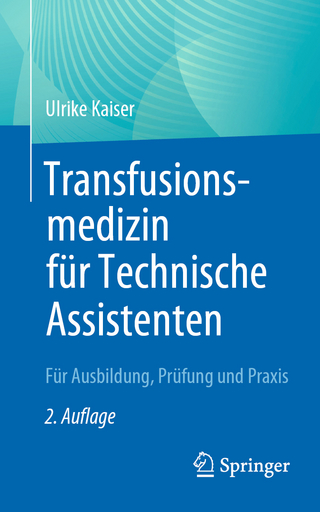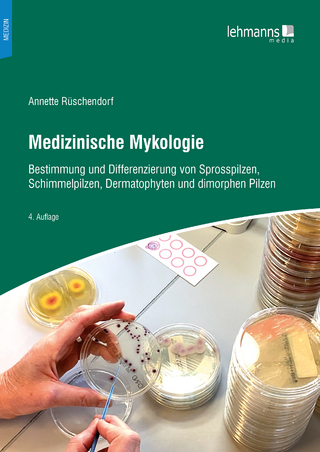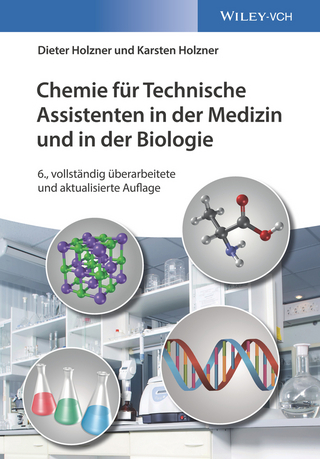Microbe: Das Original mit Übersetzungshilfen
Spektrum Akademischer Verlag
978-3-8274-1798-5 (ISBN)
- Keine Verlagsinformationen verfügbar
- Artikel merken
Microbe stellt die modernen Paradigmen der Mikrobiologie dar, alle Schlüsselkonzepte werden durch Beispiele veranschaulicht. Somit enthält es keine bloße Aneinanderreihung von Fakten, sondern ist ein gutes Lehrbuch im traditionellen Sinne, ein Text also, der vor allem zum Verstehen der Zusammenhänge und zur Prüfungsvorbereitung benutzt werden kann. Die Komplexität der medizinischen Mikrobiologie wird sowohl vom Standpunkt der Mikrobe wie auch aus der Sicht des menschlichen Wirtes darstellt.
Das Werk ist in sieben Abschnitte unterteilt, die alle relevanten Informationen zum Studium der Mikroben umfassen (Lebensräume - Struktur und Funktion - Wachstum und Vererbung - Physiologie und Diversität - biologische Interaktionen). Jedes Kapitel endet mit einigen zum Nachdenken anregendne Fragen.
Außerdem habe die Leser Zugang zu einer eigenen Internetseite (www.microbebook.org), die den Inhalt des Buches mit weiterführenden Informationen, Animationen und Videoclips vertieft. Symbole in der Marginalie des Textes verweisen auf den jeweils richtigen Link.
Moselio Schaechter was born in Italy, lived in Ecuador as a teen, and obtained his Ph.D. at the University of Pennsylvania. He spent most of his academic life at Tufts University School of Medicine and moved to San Diego in 1995. His research interests involved aspects of bacterial physiology, including growth rate regulation, membrane biology, and chromosome transactions. His e-mail address is mschaech@sunstroke.sdsu.edu. John L. Ingraham is a lifelong Californian, having been born, raised, and educated in Berkeley and having spent his academic career at the University of California, Davis. He, too, studied aspects of bacterial physiology, including growth at low temperature, the malolactic fermentation, fusel oil formation, pyrimidine metabolism, and denitrification. His e-mail address is jingrahl@earthlink.net. Frederick C. Neidhardt was born in Philadelphia, majored in biology at Kenyon College in Ohio, and received his Ph.D. at Harvard University. He held academic posts at Harvard, Purdue University, and the University of Michigan. His research focused on catabolite repression, growth rate regulation, aminoacyl-tRNA synthetases, and heat shock and other global cell net-works. His e-mail address is fcneid@umich.edu. Each one of them has served as President of the American Society for Microbiology.
Section I. Microbial Activity1. The World of MicrobesSection II. Structure and Function2. Prokaryotic Cell Structure and Function: Envelopes and Appendages3. Prokaryotic Cell Structure and Function: the Cell InteriorSection III. Growth4. Growth of Microbial Populations5. Making a Cell6. Fueling7. Biosynthesis8. Building Macromolecules9. The Cell Division CycleSection IV. Inheritance10. Genetics11. EvolutionSection V. Physiology12. Coordination and Regulation13. Succeeding in the Environment14. Differentiation and DevelopmentSection VI. Diversity15. Prokaryotic Microbes16. Eukaryotic Microbes17. Viruses, Viroids, and PrionsSection VII. Interactions18. Ecology19. Symbiosis, Predation, and Antibiosis20. Pathogenesis: the Vertebrate Host21. Infection: the Microbe22. Microbes and Human History23. Putting Microbes to Work Section I. Microbial Activity 1. The World of Microbes Section II. Structure and Function2. Prokaryotic Cell Structure and Function: Envelopes and Appendages3. Prokaryotic Cell Structure and Function: the Cell Interior Section III. Growth4. Growth of Microbial Populations5. Making a Cell6. Fueling7. Biosynthesis8. Building Macromolecules9. The Cell Division Cycle Section IV. Inheritance10. Genetics11. Evolution Section V. Physiology12. Coordination and Regulation13. Succeeding in the Environment14. Differentiation and Development Section VI. Diversity15. Prokaryotic Microbes16. Eukaryotic Microbes17. Viruses, Viroids, and Prions Section VII. Interactions18. Ecology19. Symbiosis, Predation, and Antibiosis20. Pathogenesis: the Vertebrate Host21. Infection: the Microbe22. Microbes and Human History23. Putting Microbes to Work
| Erscheint lt. Verlag | 21.9.2006 |
|---|---|
| Reihe/Serie | Easy Reading |
| Zusatzinfo | XXIV, 536 S. 186 Abb. in Farbe. |
| Verlagsort | Heidelberg |
| Sprache | deutsch |
| Maße | 196 x 270 mm |
| Gewicht | 1700 g |
| Themenwelt | Medizin / Pharmazie ► Gesundheitsfachberufe ► MTA - Labor |
| Naturwissenschaften ► Biologie ► Mikrobiologie / Immunologie | |
| Naturwissenschaften ► Biologie ► Zellbiologie | |
| Schlagworte | Bakterien • Einzeller • Medizinische Mikrobiologie • Mikrobiologie • Mikrobiologie; Handbuch/Lehrbuch • Mikrobiologie, Lehrbuch • Pilze • Viren |
| ISBN-10 | 3-8274-1798-8 / 3827417988 |
| ISBN-13 | 978-3-8274-1798-5 / 9783827417985 |
| Zustand | Neuware |
| Haben Sie eine Frage zum Produkt? |
aus dem Bereich




